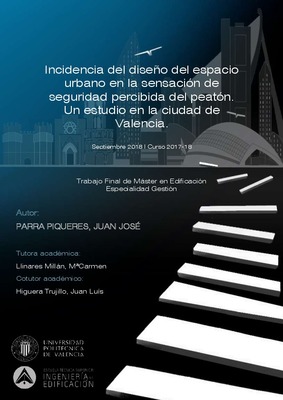JavaScript is disabled for your browser. Some features of this site may not work without it.
Buscar en RiuNet
Listar
Mi cuenta
Estadísticas
Ayuda RiuNet
Admin. UPV
Incidencia del diseño del espacio urbano en la sensación de seguridad percibida del peatón. Un estudio en la ciudad de Valencia
Mostrar el registro completo del ítem
Parra Piqueres, JJ. (2018). Incidencia del diseño del espacio urbano en la sensación de seguridad percibida del peatón. Un estudio en la ciudad de Valencia. http://hdl.handle.net/10251/143393
Por favor, use este identificador para citar o enlazar este ítem: http://hdl.handle.net/10251/143393
Ficheros en el ítem
Metadatos del ítem
| Título: | Incidencia del diseño del espacio urbano en la sensación de seguridad percibida del peatón. Un estudio en la ciudad de Valencia | |||
| Autor: | Parra Piqueres, Juan José | |||
| Director(es): | ||||
| Entidad UPV: |
|
|||
| Fecha acto/lectura: |
|
|||
| Resumen: |
[ES] Hoy en día existe una demanda social clara y fuerte que exige ciudades y espacios urbanos más seguros, de forma que la composición y funcionalidad de estos espacios debe favorecer el sentido de seguridad de los ...[+]
[EN] Today there is a clear and strong social demand requiring cities and urban areas safer, in such a way that the composition and functionality of these spaces must promote the sense of security of the citizens. So ...[+]
|
|||
| Palabras clave: |
|
|||
| Derechos de uso: | Reserva de todos los derechos | |||
| Editorial: |
|
|||
| Titulación: |
|
|||
| Tipo: |
|
Localización
recommendations
Este ítem aparece en la(s) siguiente(s) colección(ones)
-
ETSIE - Trabajos académicos [2383]
Escuela Técnica Superior de Ingenieria de Edificación







